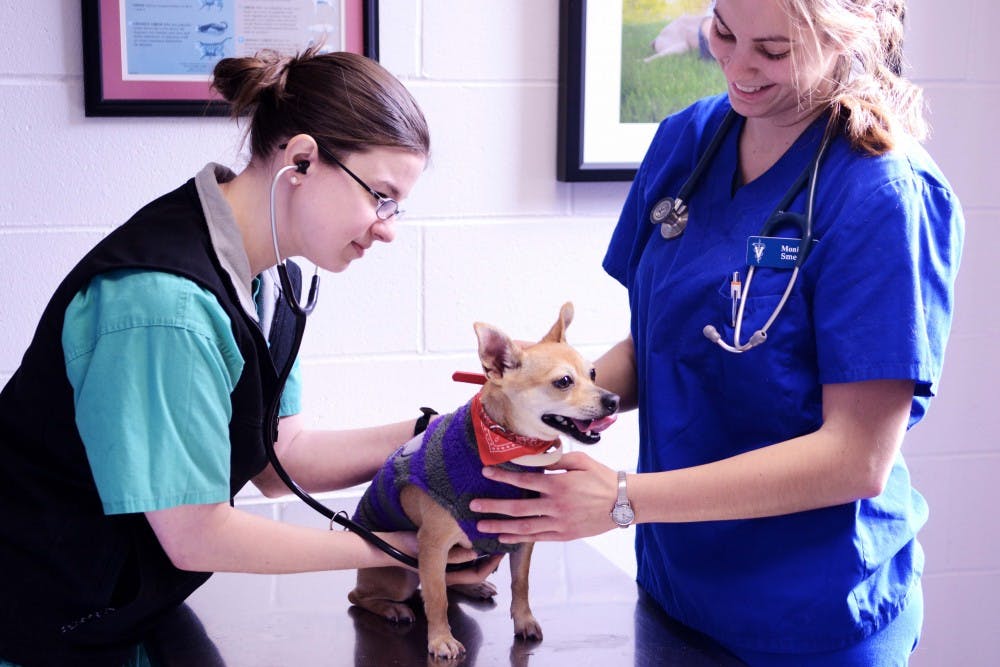
Penn's School of Veterinary Medicine and the Perelman School of Medicine discovered that pets have been prescribed opioid at a high rate in the past decade. (File Photo)
Researchers from Penn's School of Veterinary Medicine and the Perelman School of Medicine found that opioid prescriptions for pets have drastically increased over the past decade.
The rise in pet opioid prescriptions has consequences for the larger opioid crisis, experts say, raising the amount of leftover pills and potentially increasing the risk of misuse for both humans and pets.
The study was the first to examine veterinary opioid prescriptions, finding that from 2007 to 2017 the amount of opioids prescribed among pets at Penn Vet's Ryan Hospital went up by 41.2 percent, compared to an increase in visits of only 12.8 percent.
Researchers looked at the prescriptions by veterinarians for small animals such as dogs, cats, birds, and reptiles and found that hospital veterinarians prescribed "a total of 105,183,689 tablets of tramadol, 97,547 tablets of hydrocodone, 38,939 tablets of codeine, and 3,153 fentanyl patches."
Senior author of the study and professor of Emergency Medicine Jeanmarie Perrone said she was approached by Penn Vet to give a talk about opioid prescriptions, which inspired her to conduct the study.
“[The Vet School] had noted that their interns were getting calls from pet owners asking for refill prescriptions at odd hours and they wanted to know how we deal with that,” Perrone said.

Rosemary Polomano, associate dean for practice and professor of pain practice at Penn's School of Nursing, said trends from human pain management likely affected pet treatment. Polomano teaches a graduate course on pain science at Penn and has expertise developing strategies to reduce opioid misuse.
“I think that the aftermath of the aggressive marketing and promotion of opioids for the treatment of chronic pain and acute pain, so that people wouldn't suffer, also spilled over into the animal care setting,” she said.
In 1980, the New England Journal of Medicine published a study in an editorial, with data that ended up being faulty science, which said that people who were prescribed opioids were at a very low risk for addiction.
Polomano said this led to a storm of pharmaceutical companies capitalizing off of the study, resulting in the companies instructing healthcare professionals to aggressively prescribe opioids.
“Unfortunately, I was involved in doing some of that education sponsored by pharmaceutical companies that minimize the risks of opioids," Polomano said. "But we didn’t know at the time, that was the information that we had, and we were relying on faulty science."

Experts say the more opioids that are prescribed, whether for animals or humans, the greater the risk of abuse.
“I think this veterinary prescription just contributes to more leftover medications in the household that could be accidentally misused or accidentally diverted,” Perrone said.
To help combat the problem of leftover pills and overprescription, Pennsylvania started a prescription drug monitoring program to ensure that patients were not receiving excess amount of pills from different doctors.
”Every time I write a prescription for a patient I have to look at what their past controlled substance prescriptions have been — it's literally one click now in our medical records," Perrone said.
Doctors are also focusing on patient education to help counter the growing opioid crisis.
“We teach patients when they are prescribed opioids responsible use of opioids, responsible disposing of opioids, and responsible monitoring of themselves when they're on opioids,” Polomano said.
Despite the positive changes surrounding opioid prescriptions, many have only occurred in the world of human medical care, Perrone said.
“Over the last five years we've really pulled back a lot and we've changed culture a lot — and not everywhere, but more in places where we can raise awareness," Perrone said. "So that new paradigm shift probably hasn't really occurred in veterinarians yet.”
The Daily Pennsylvanian is an independent, student-run newspaper. Please consider making a donation to support the coverage that shapes the University. Your generosity ensures a future of strong journalism at Penn.
Donate







